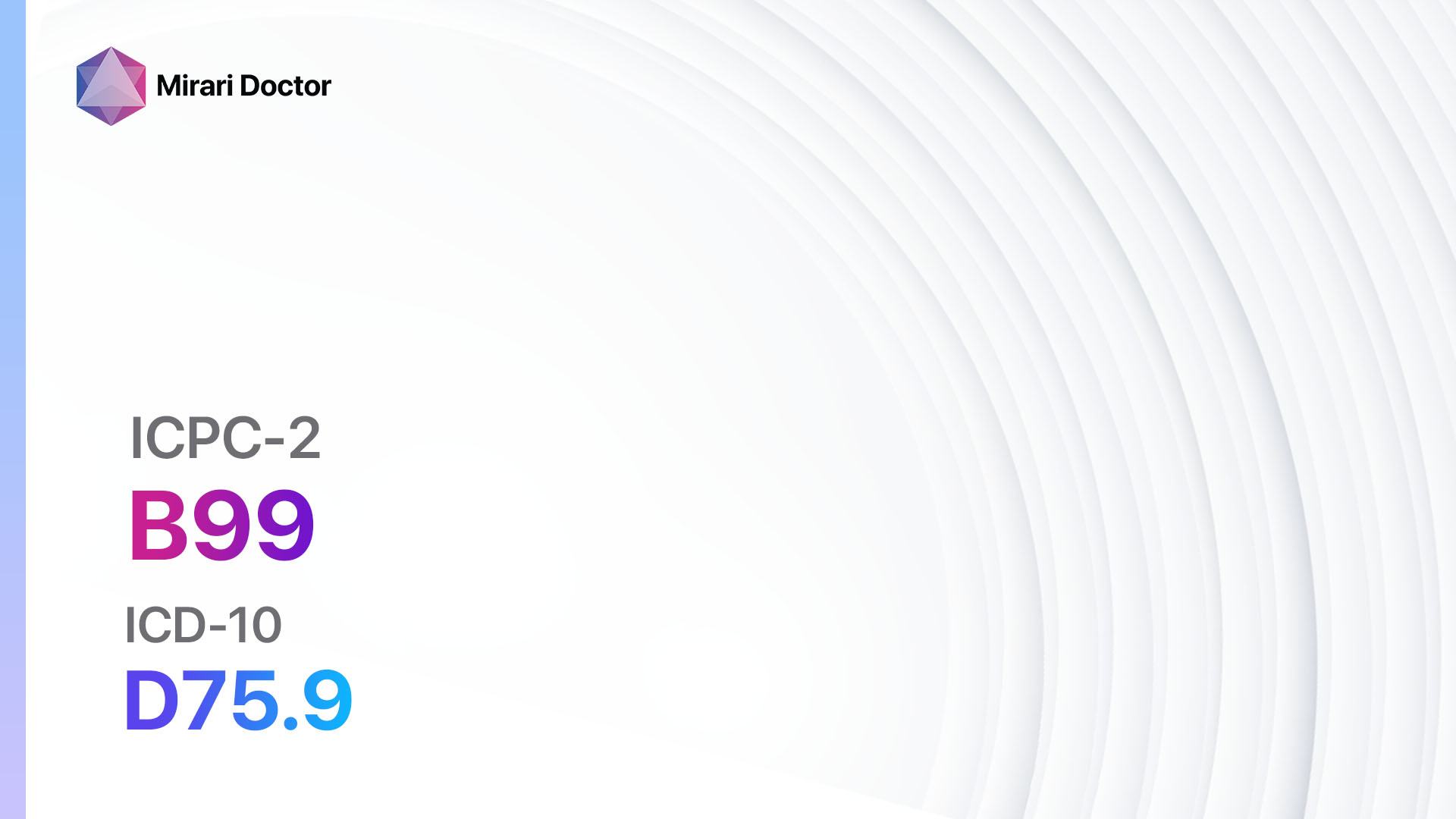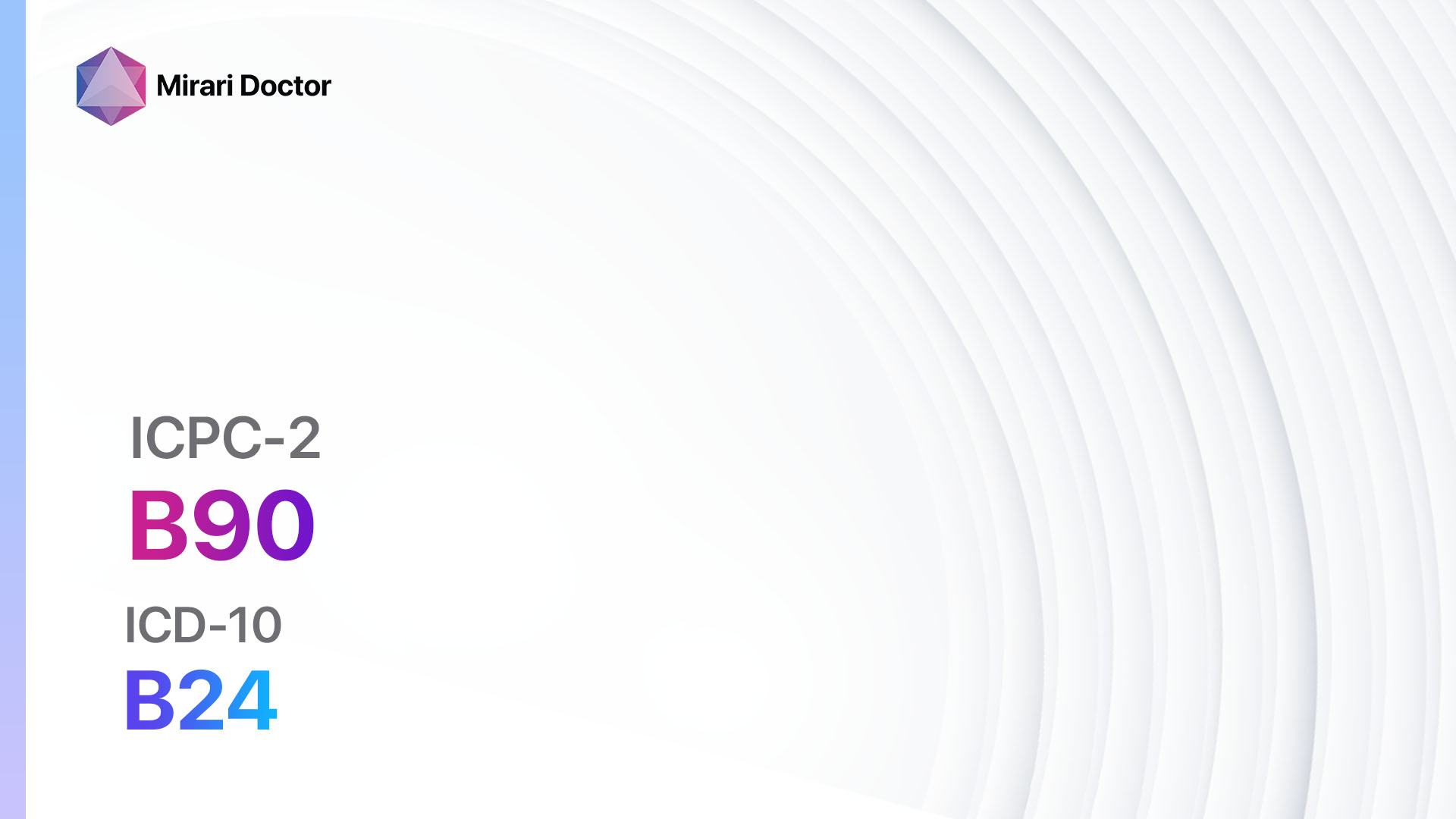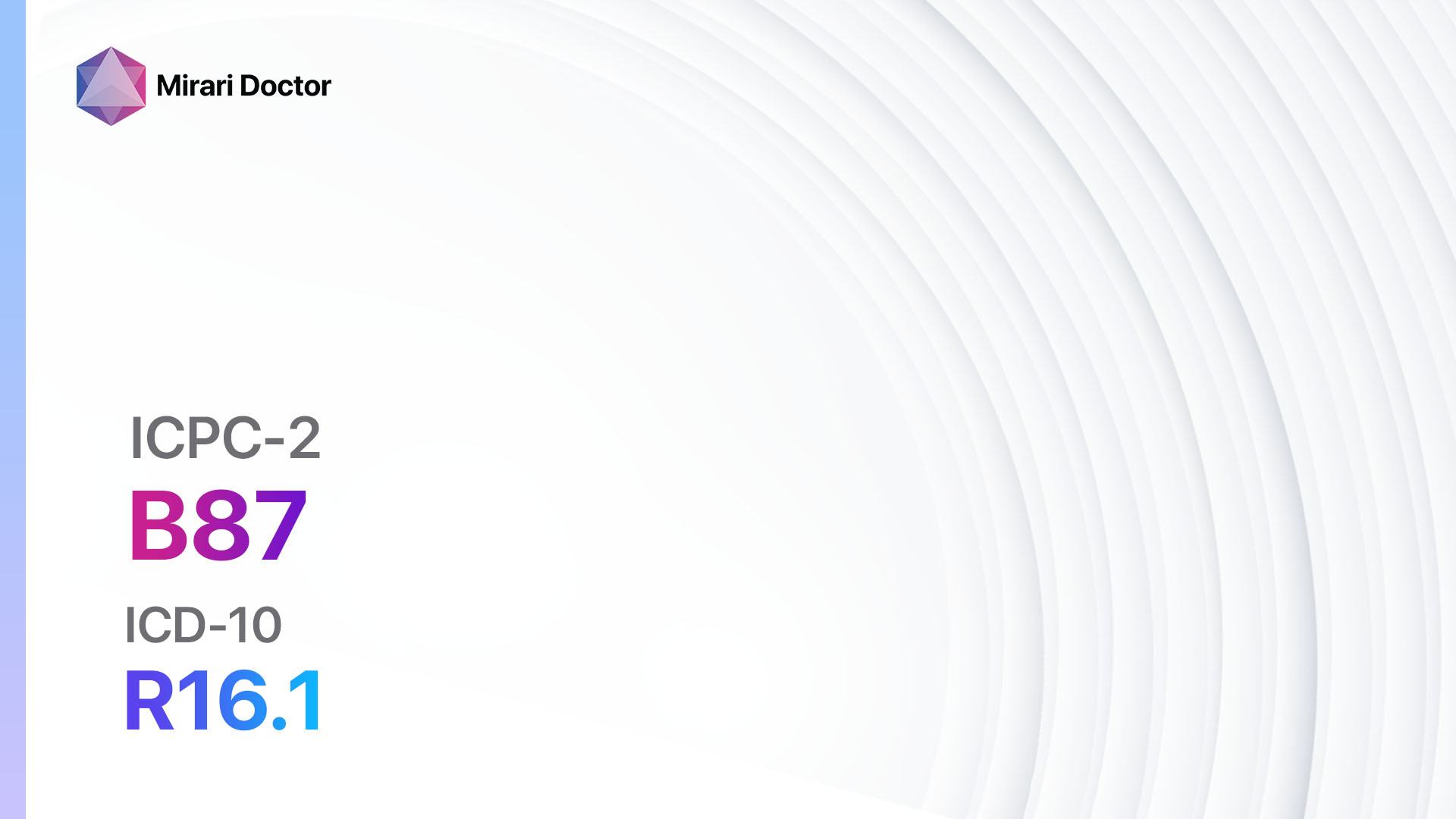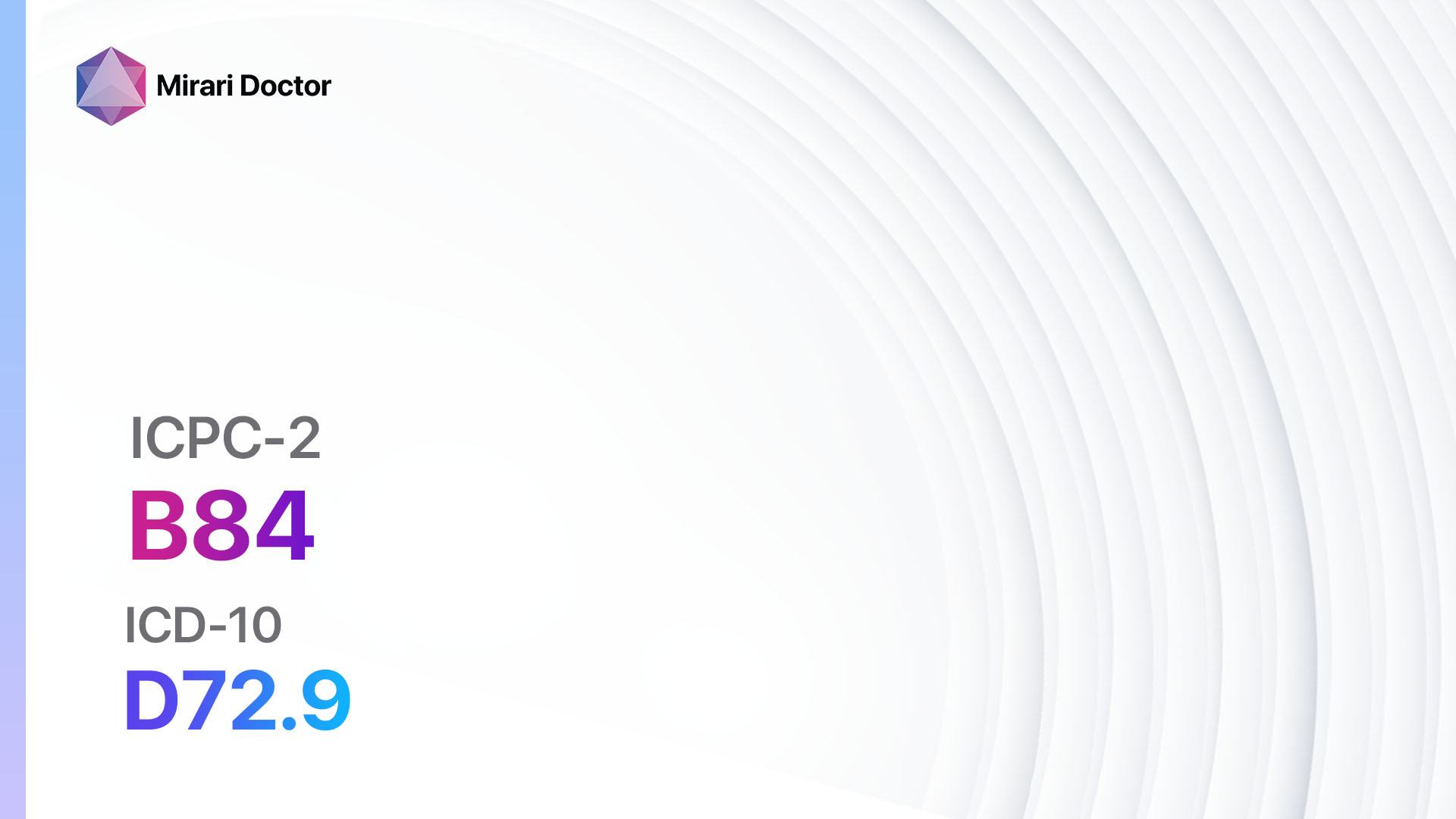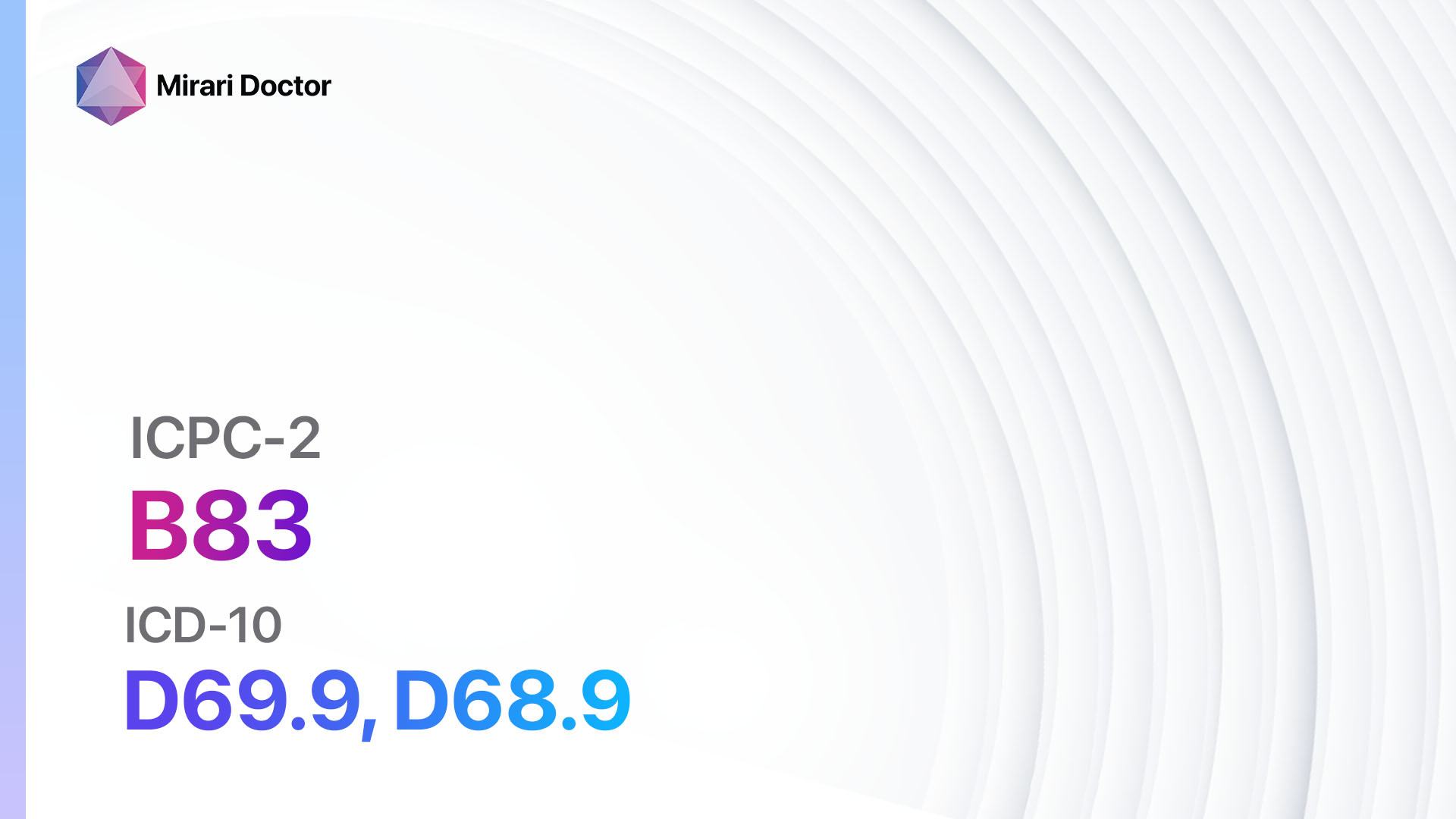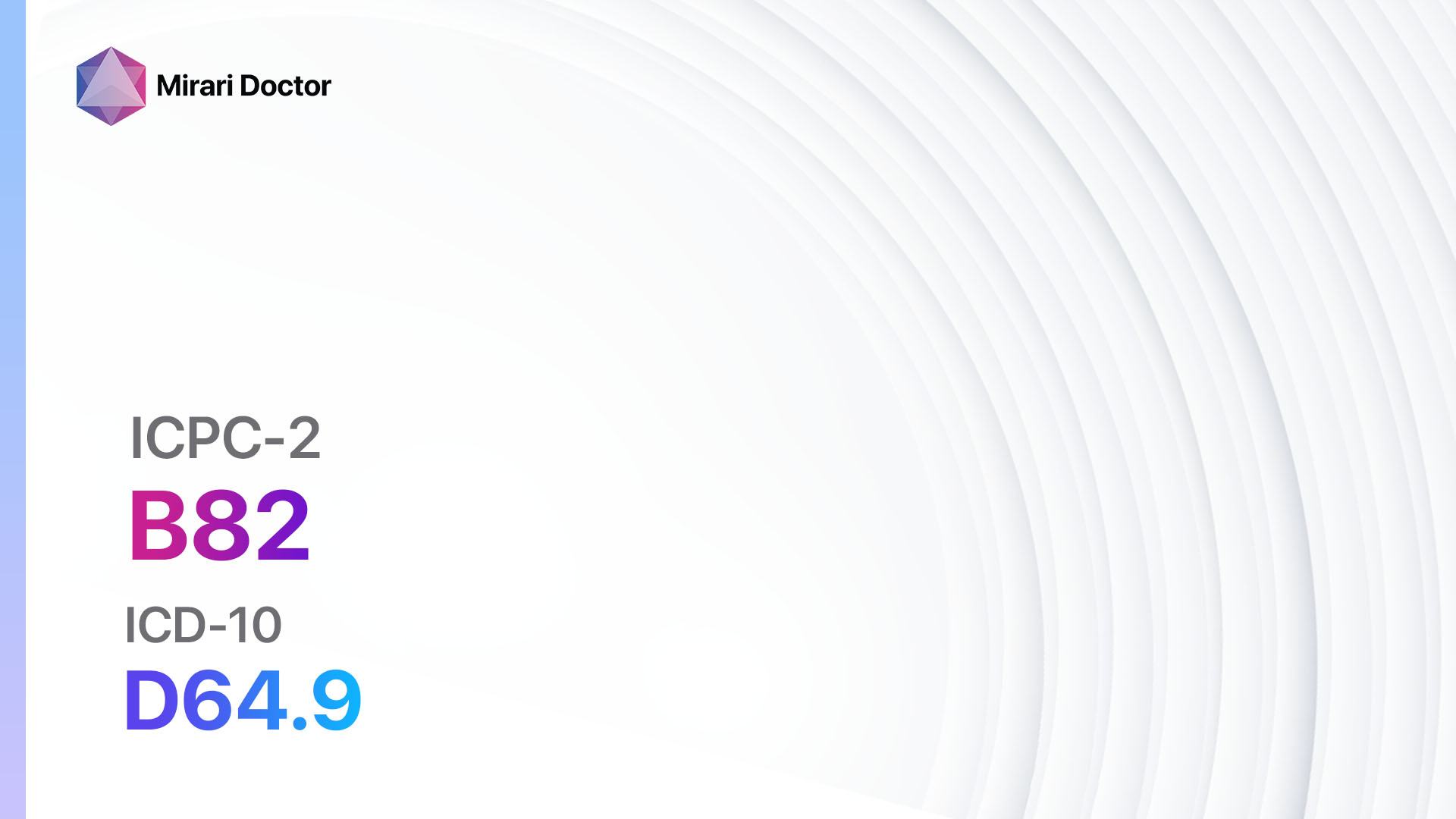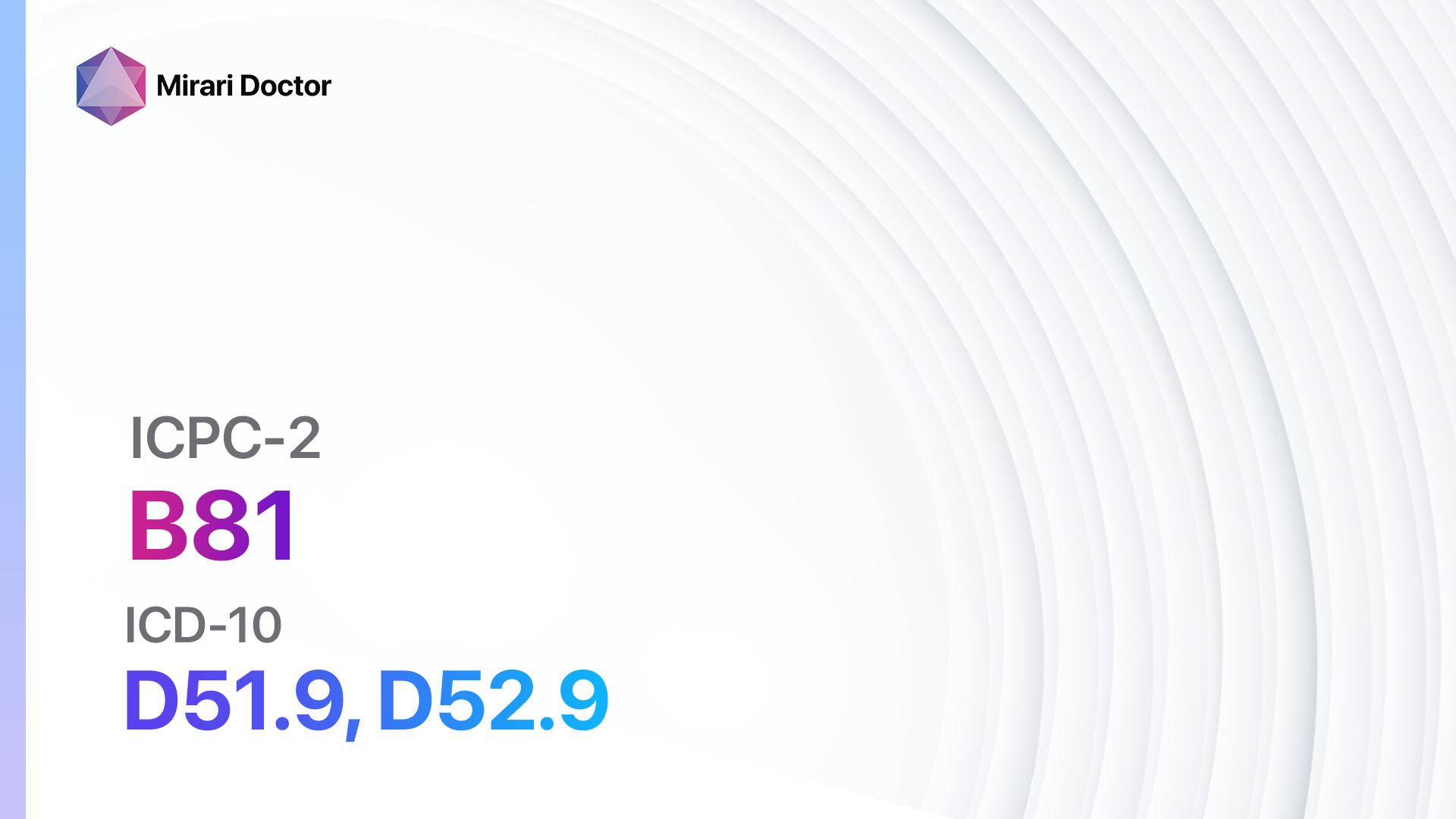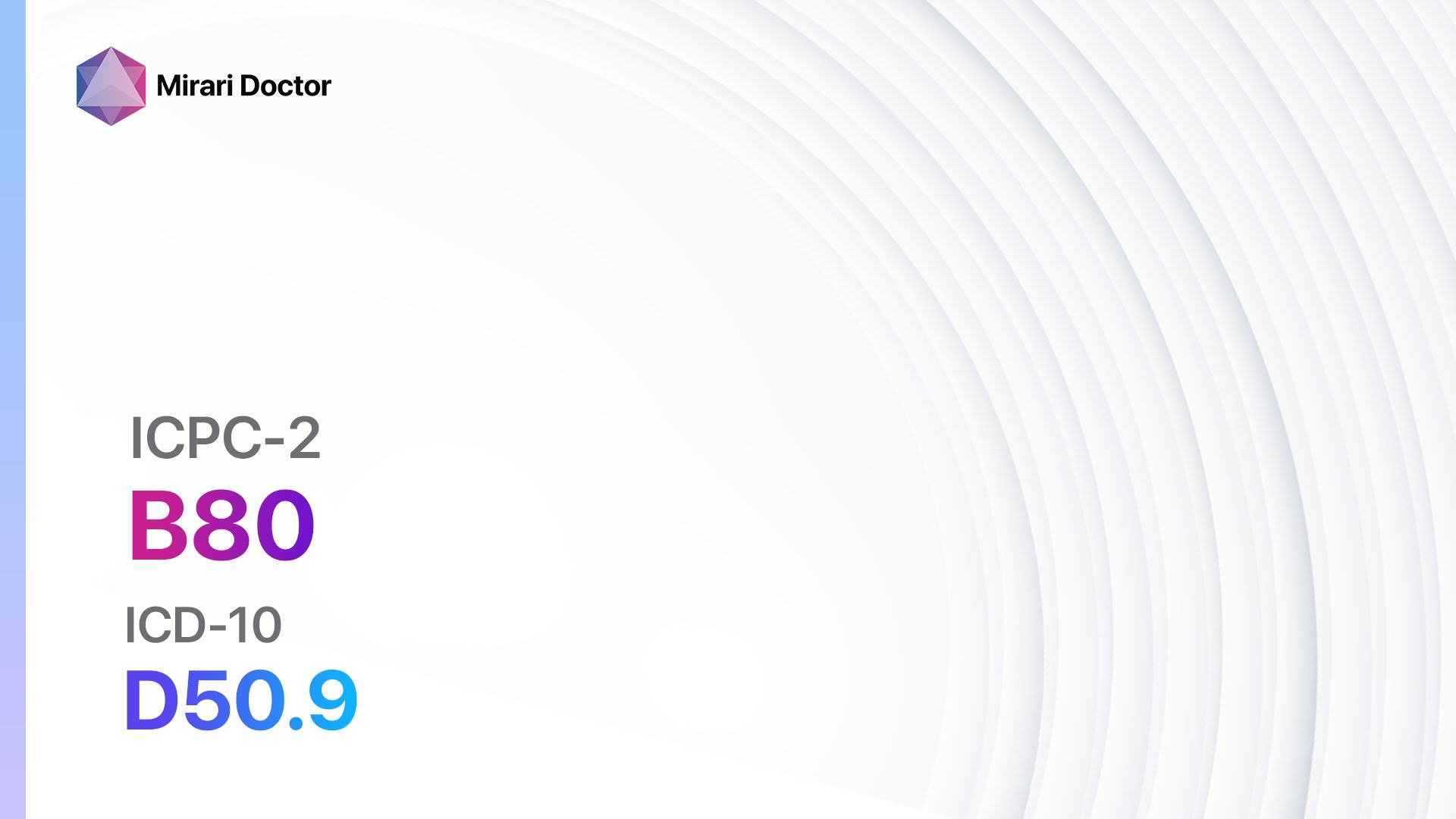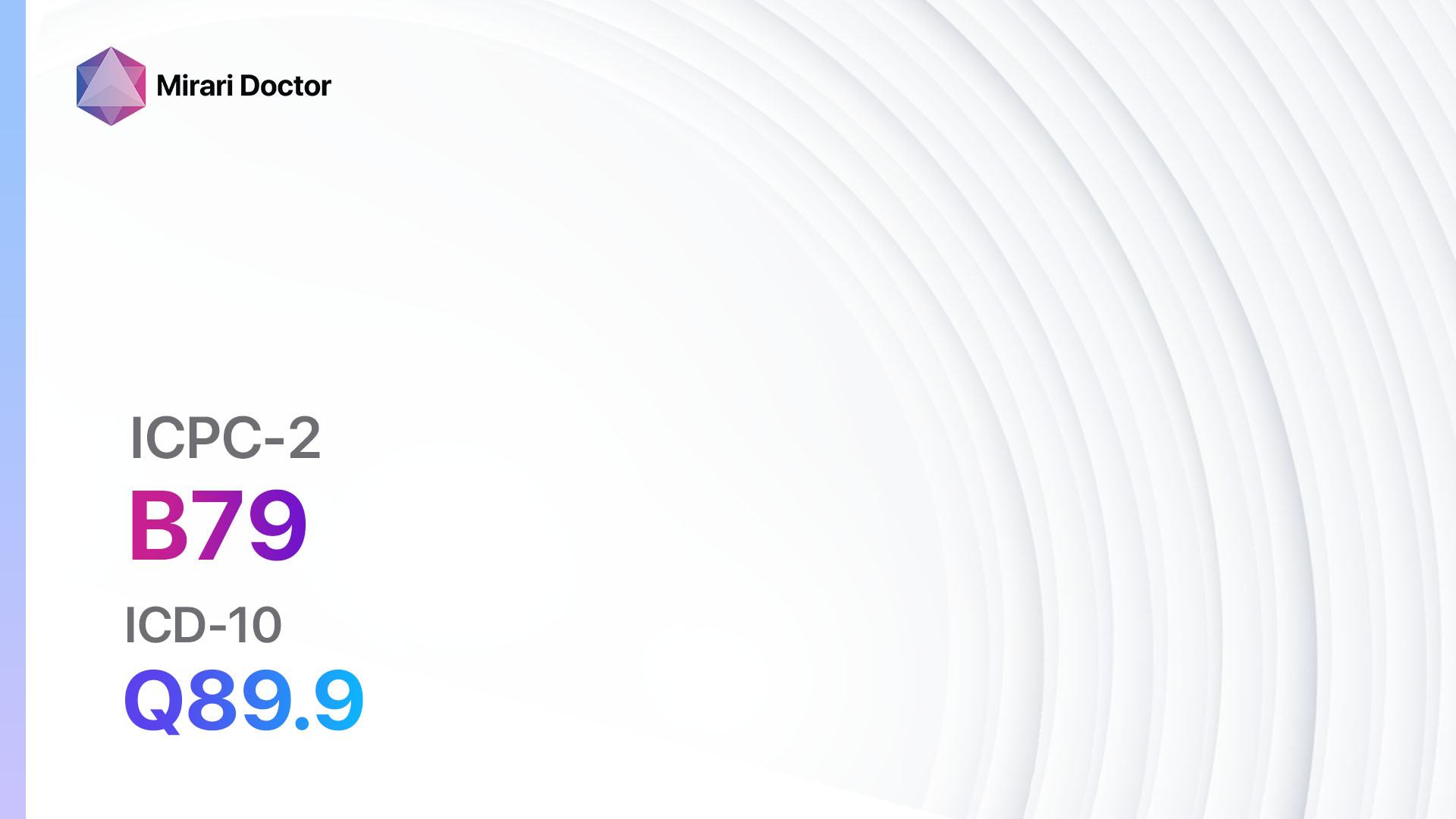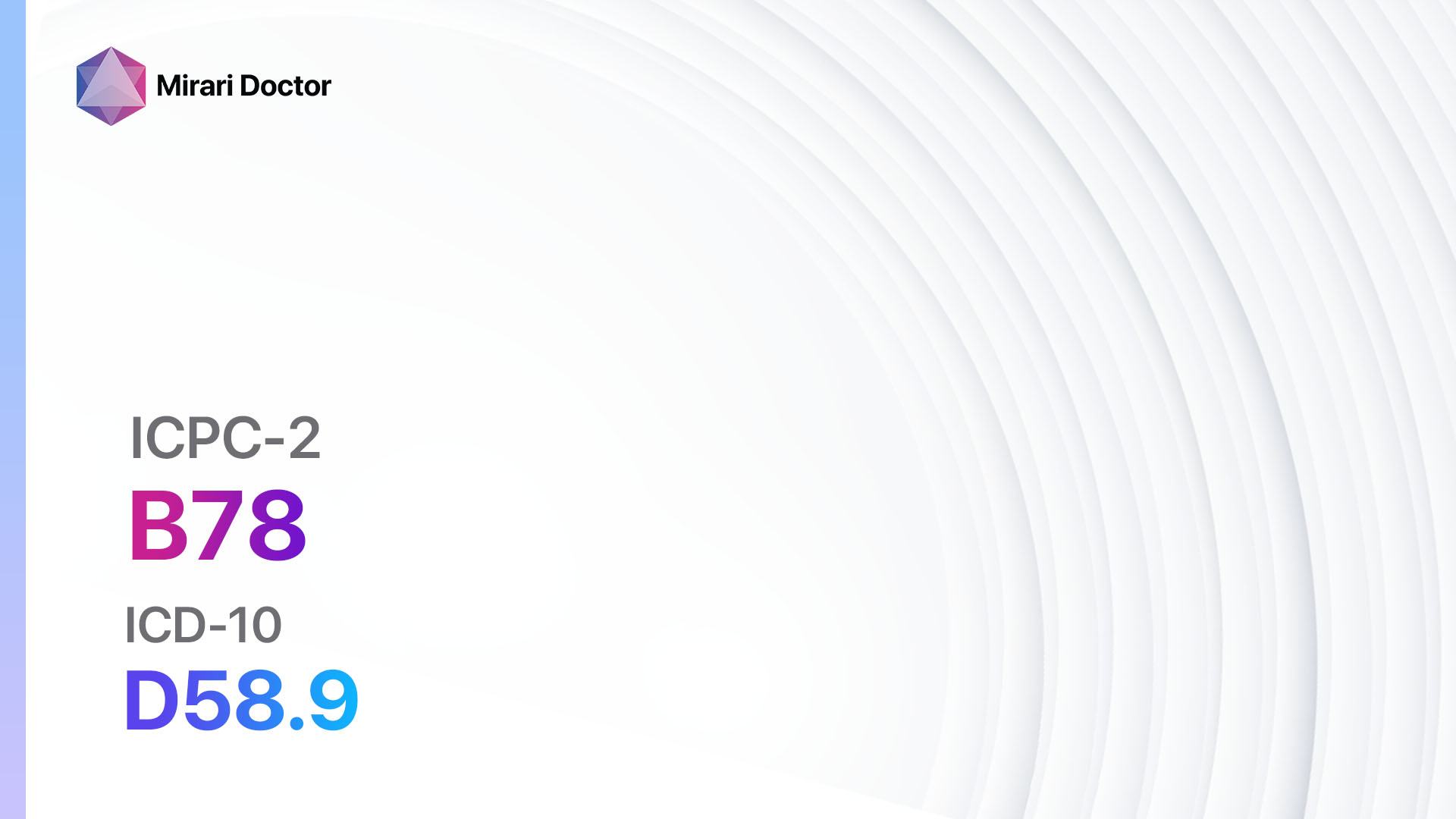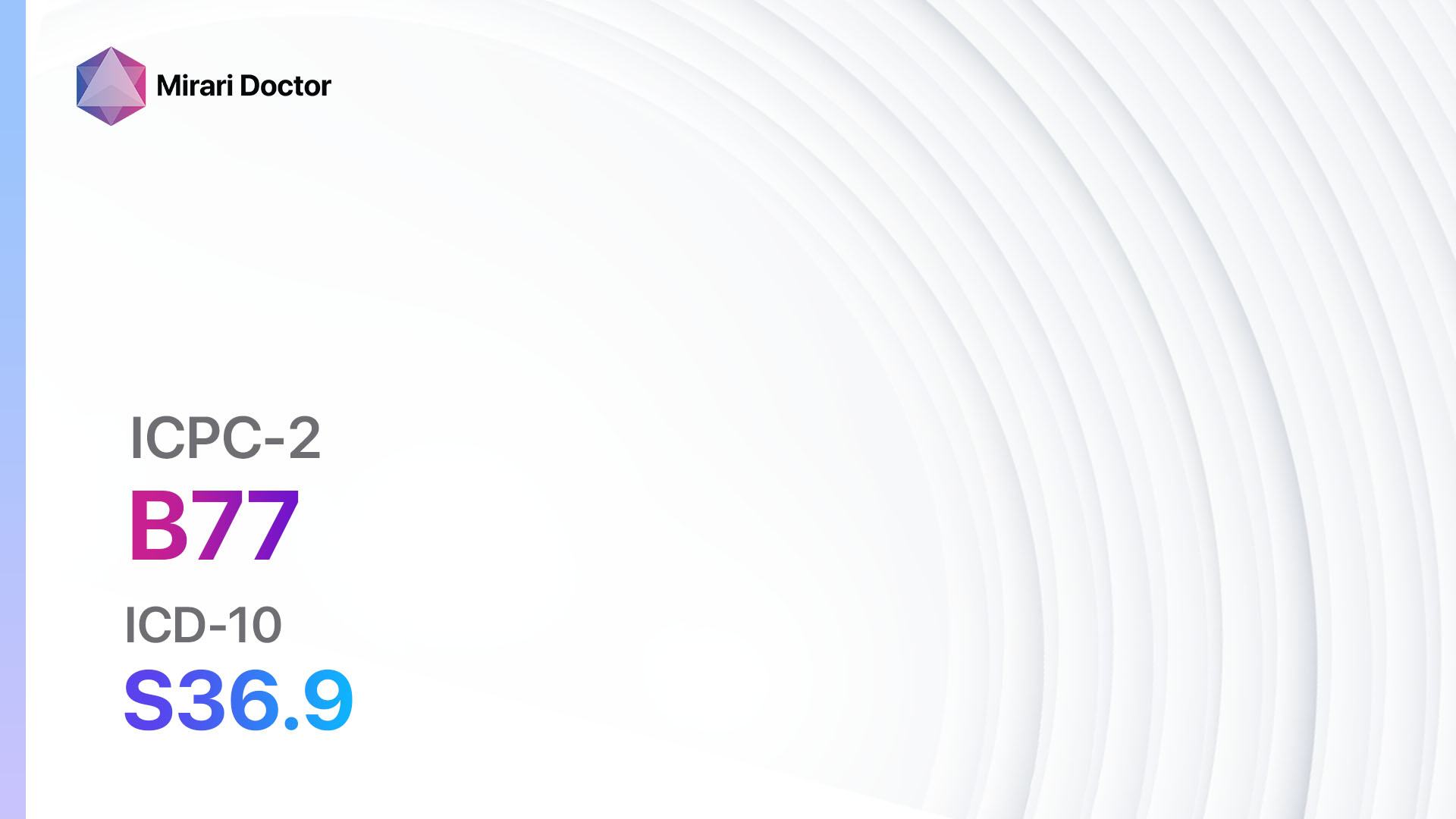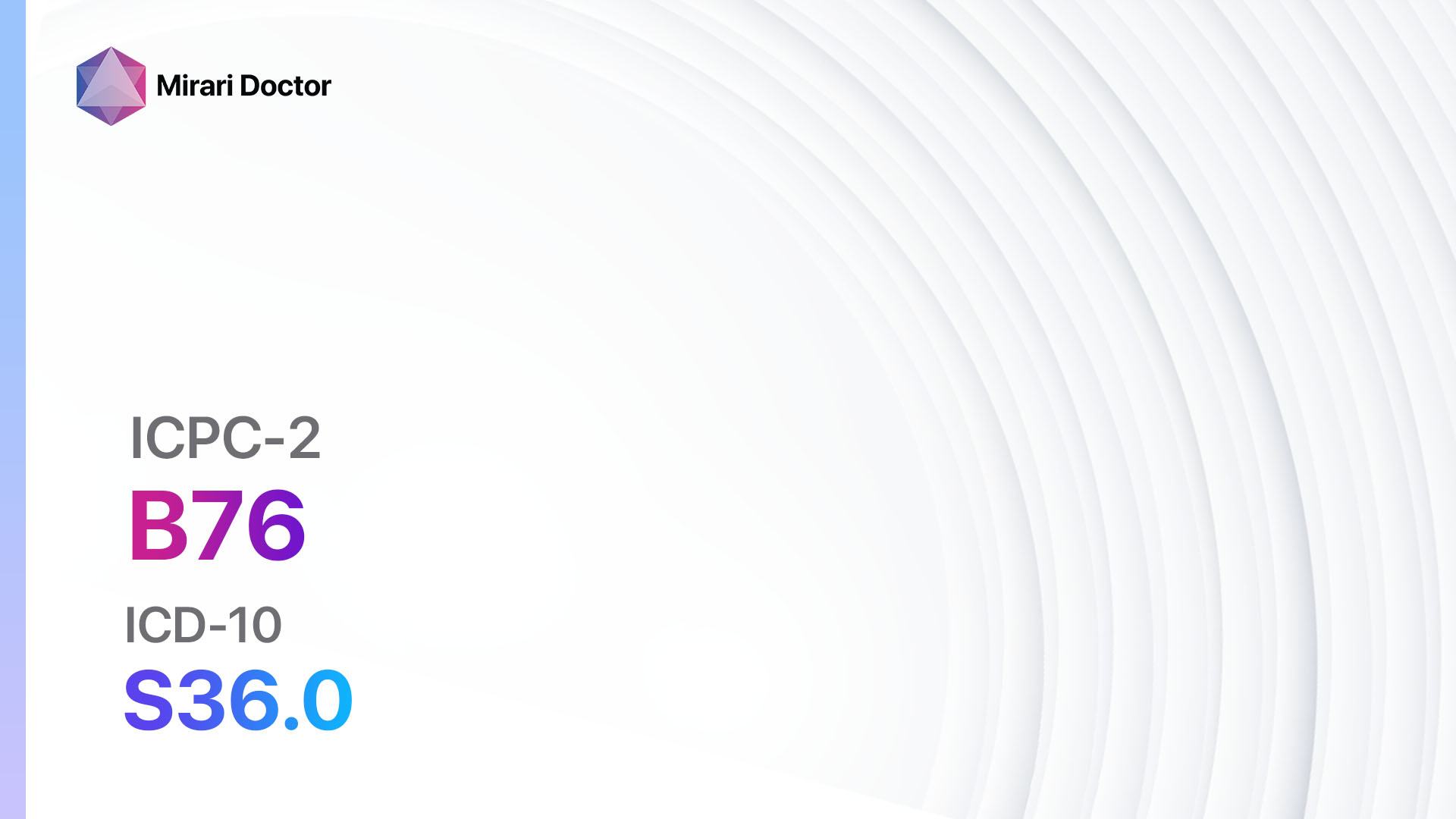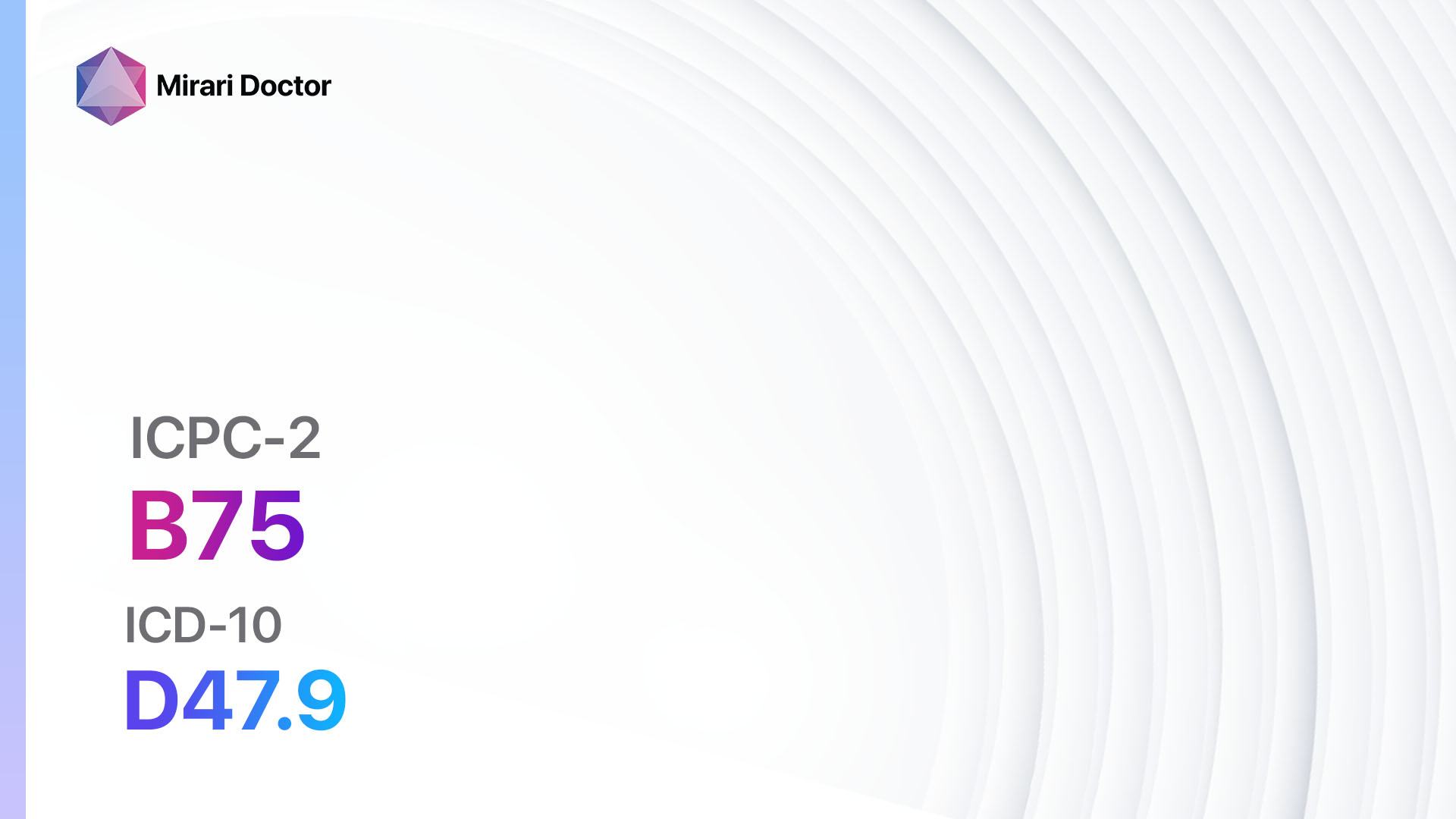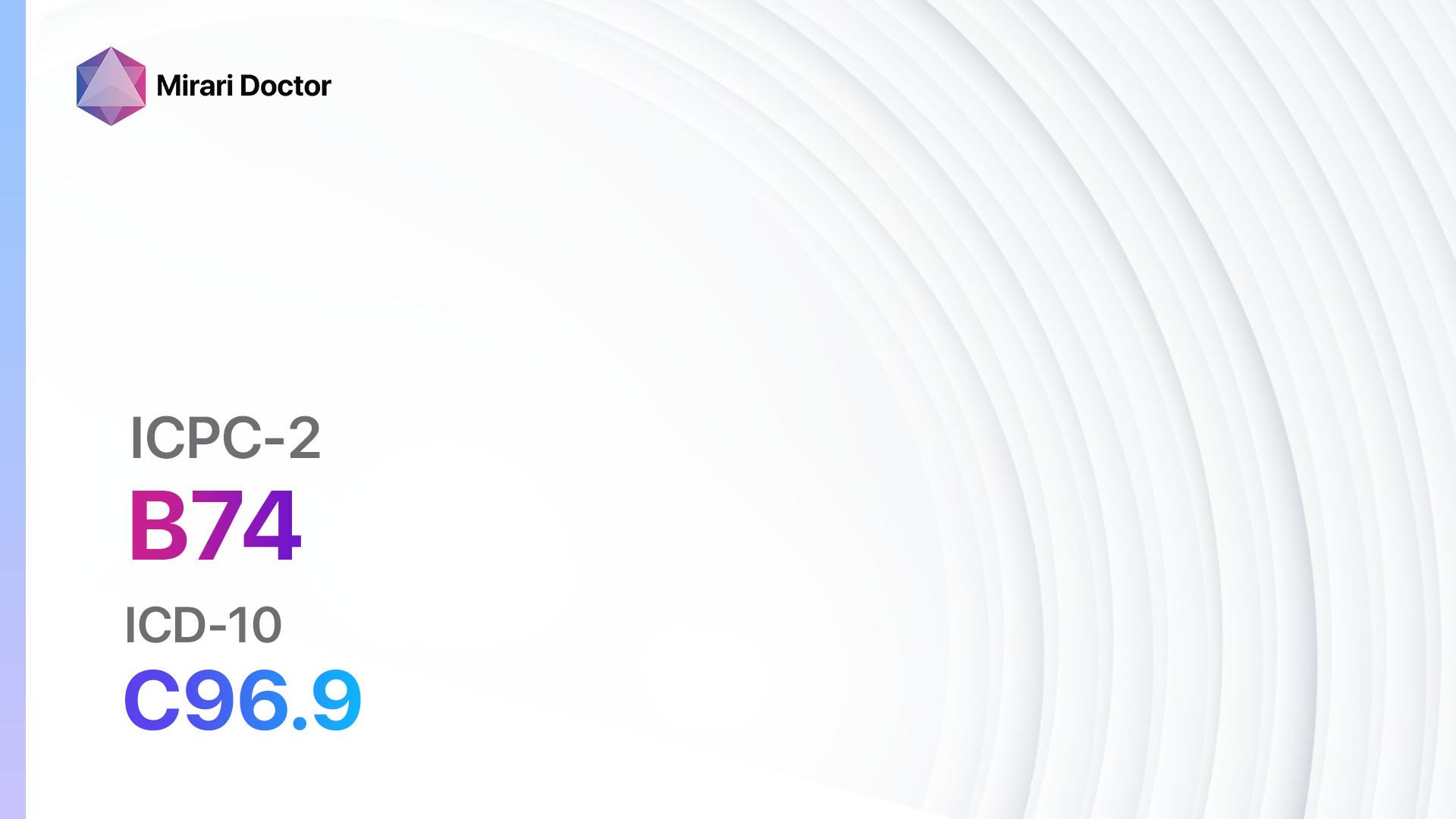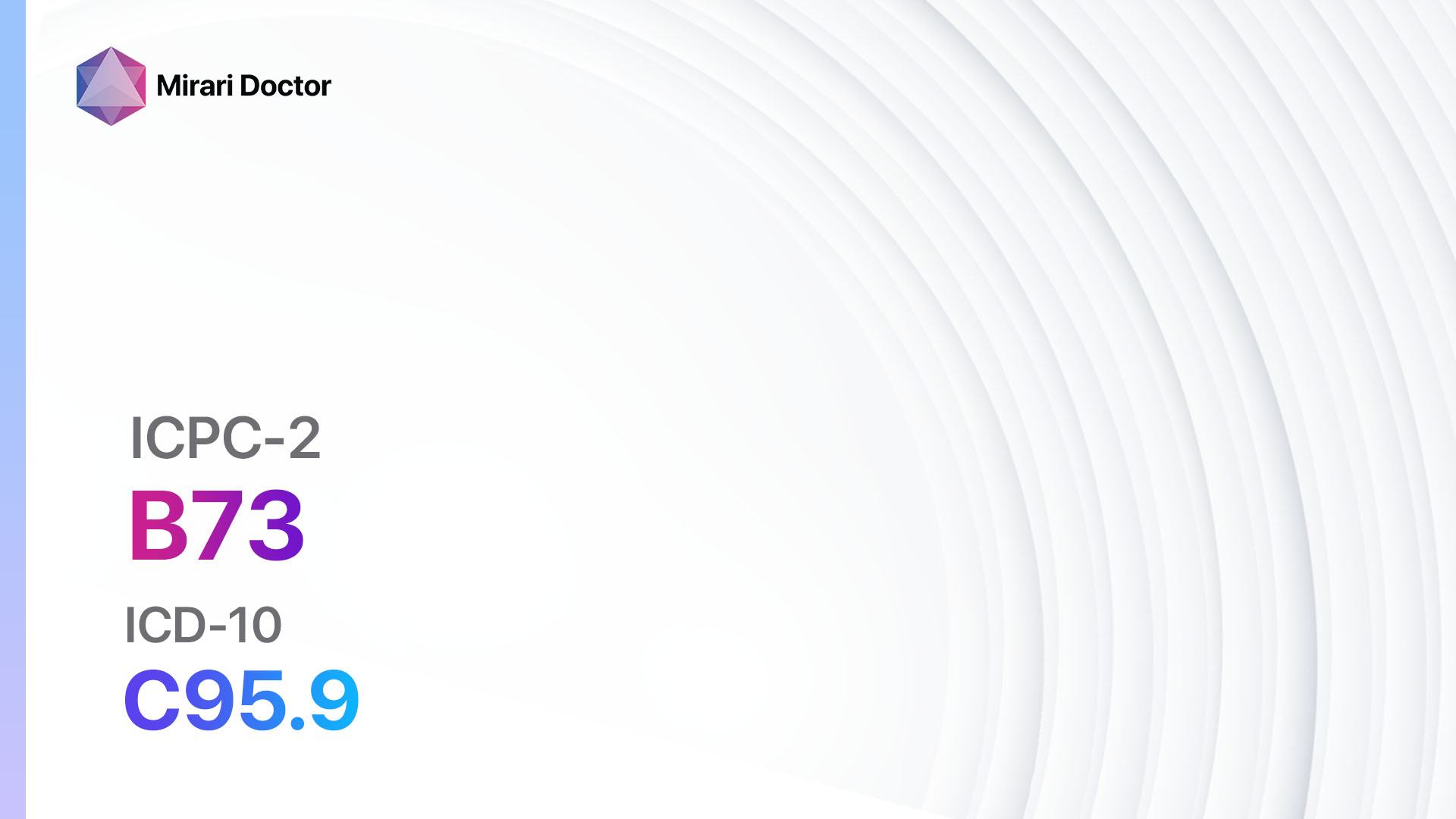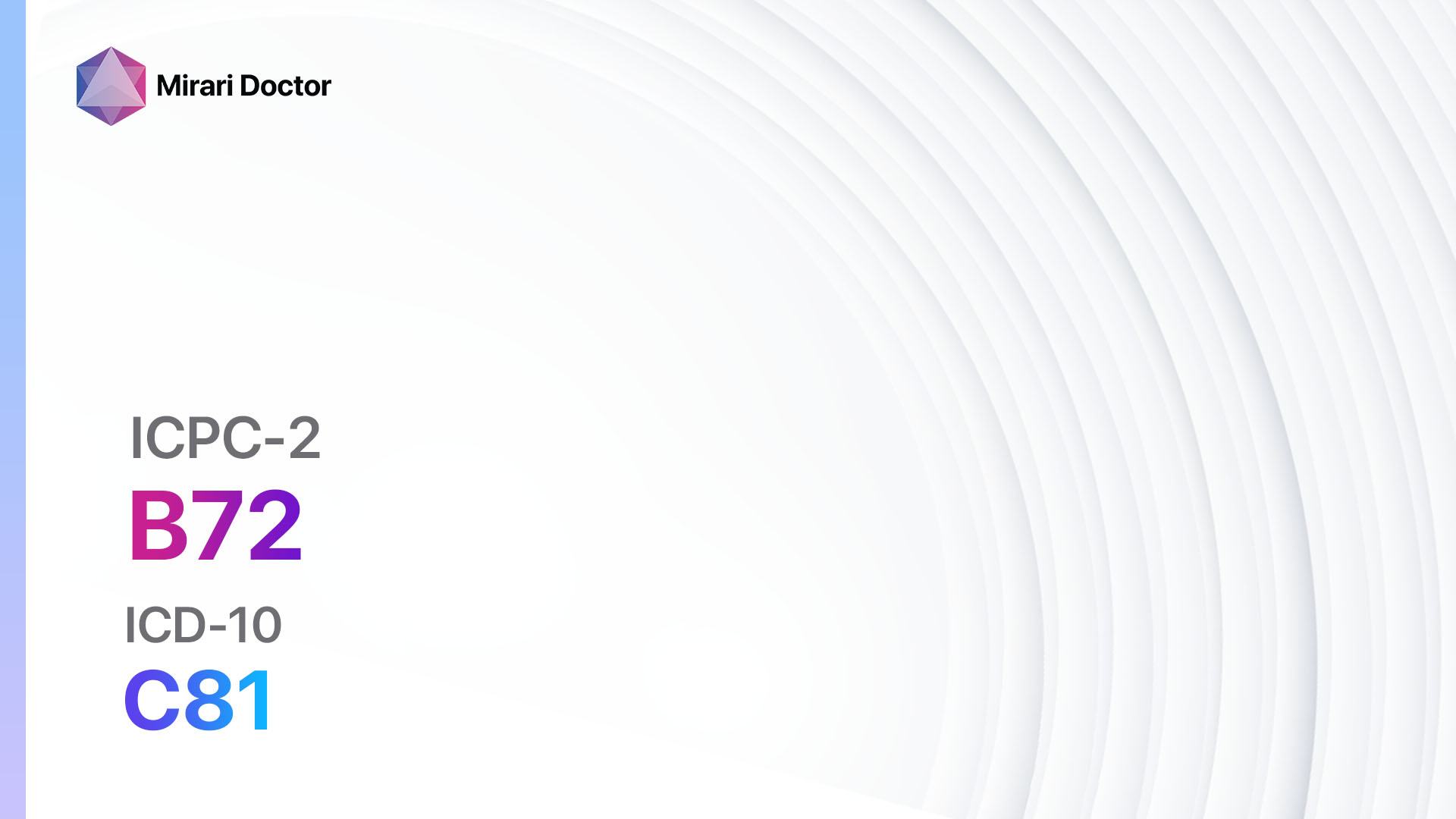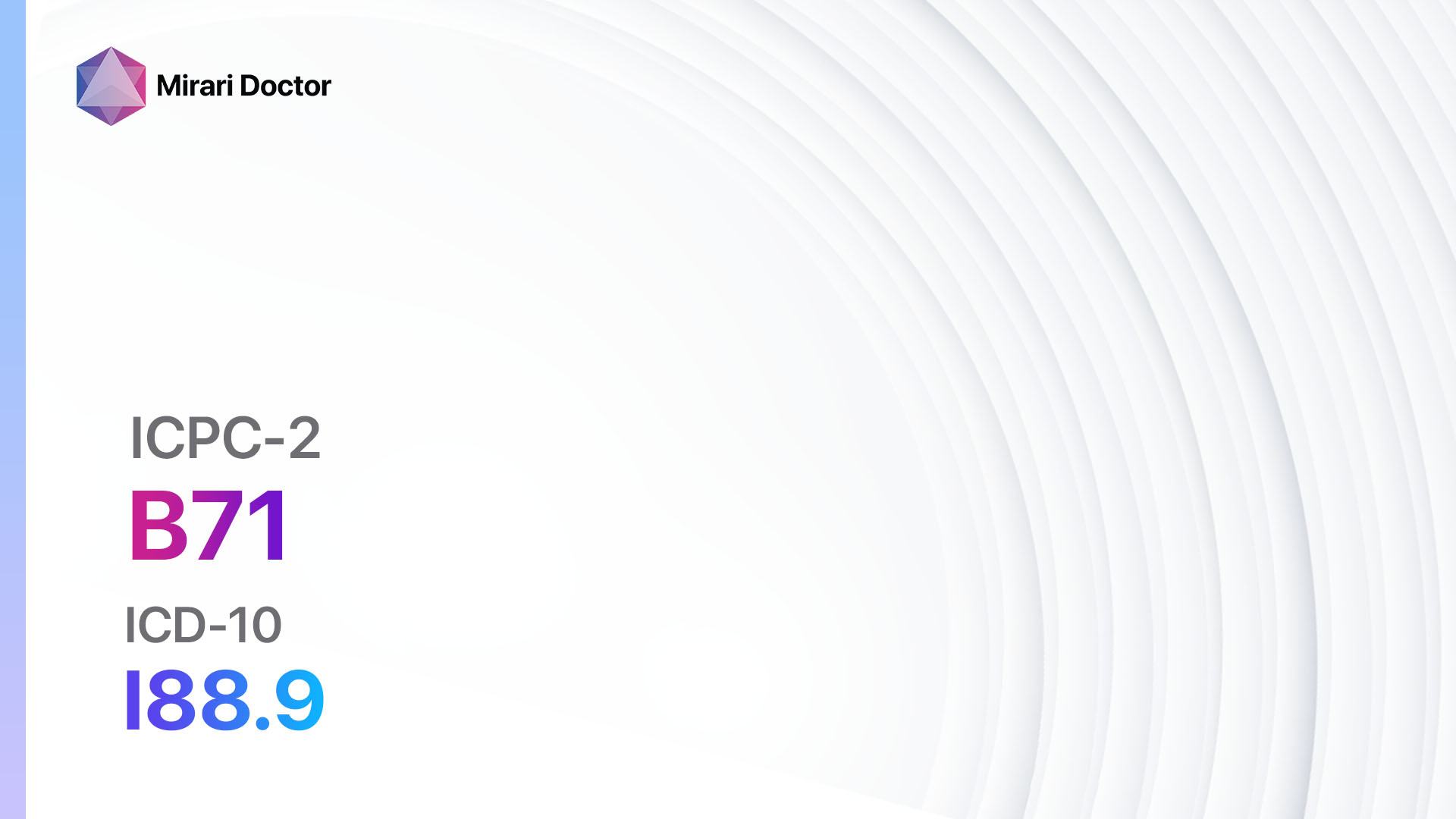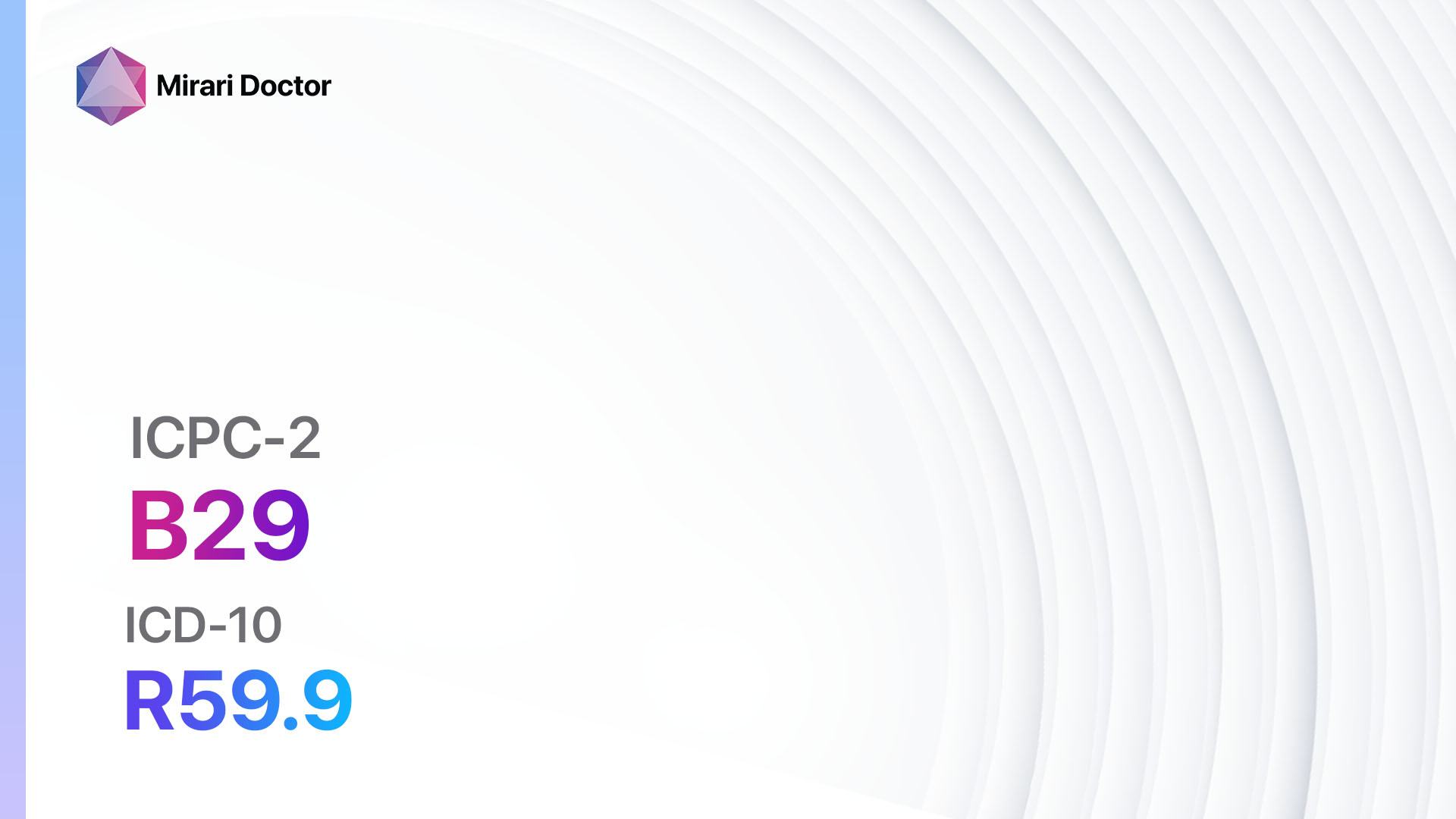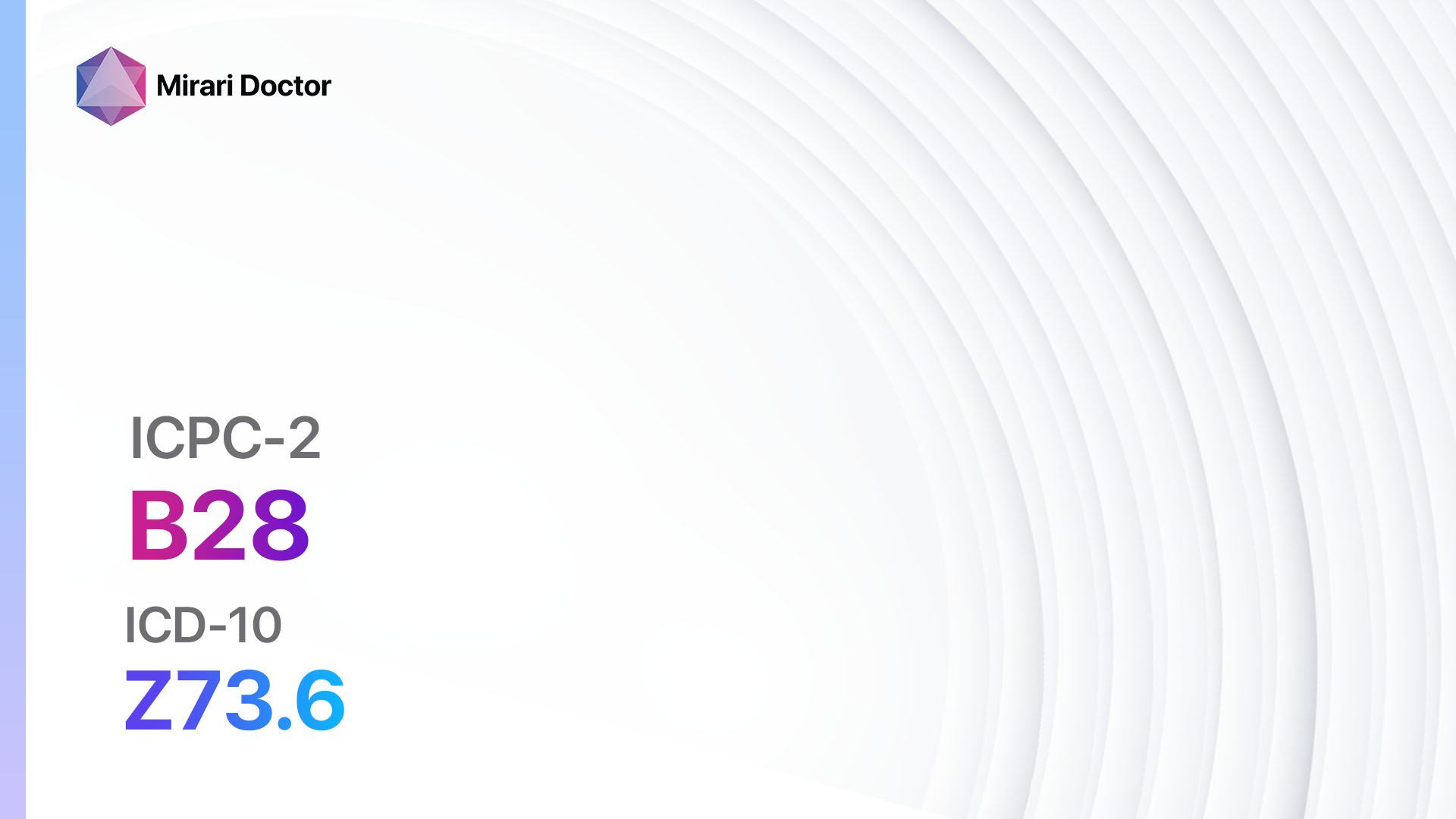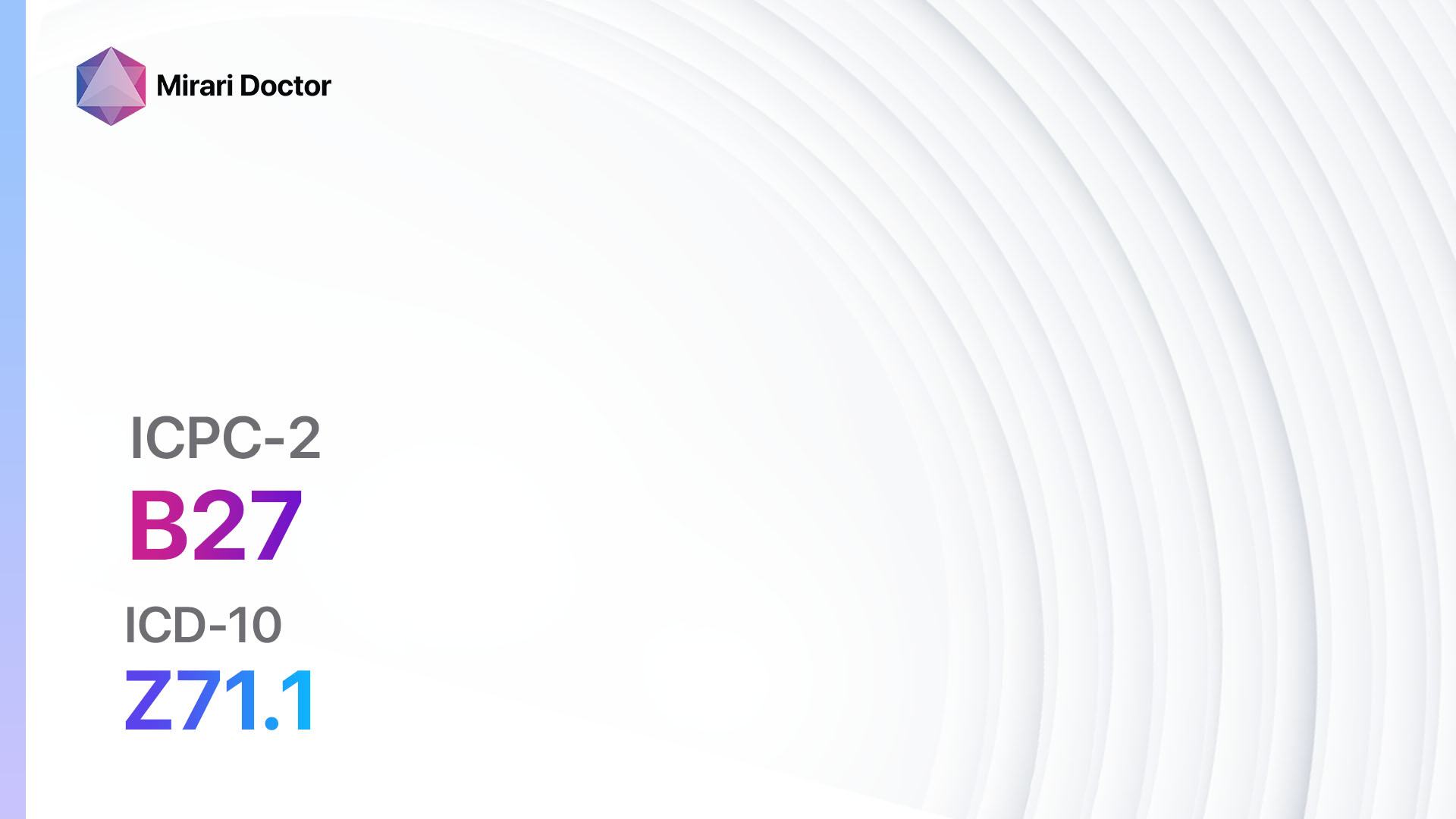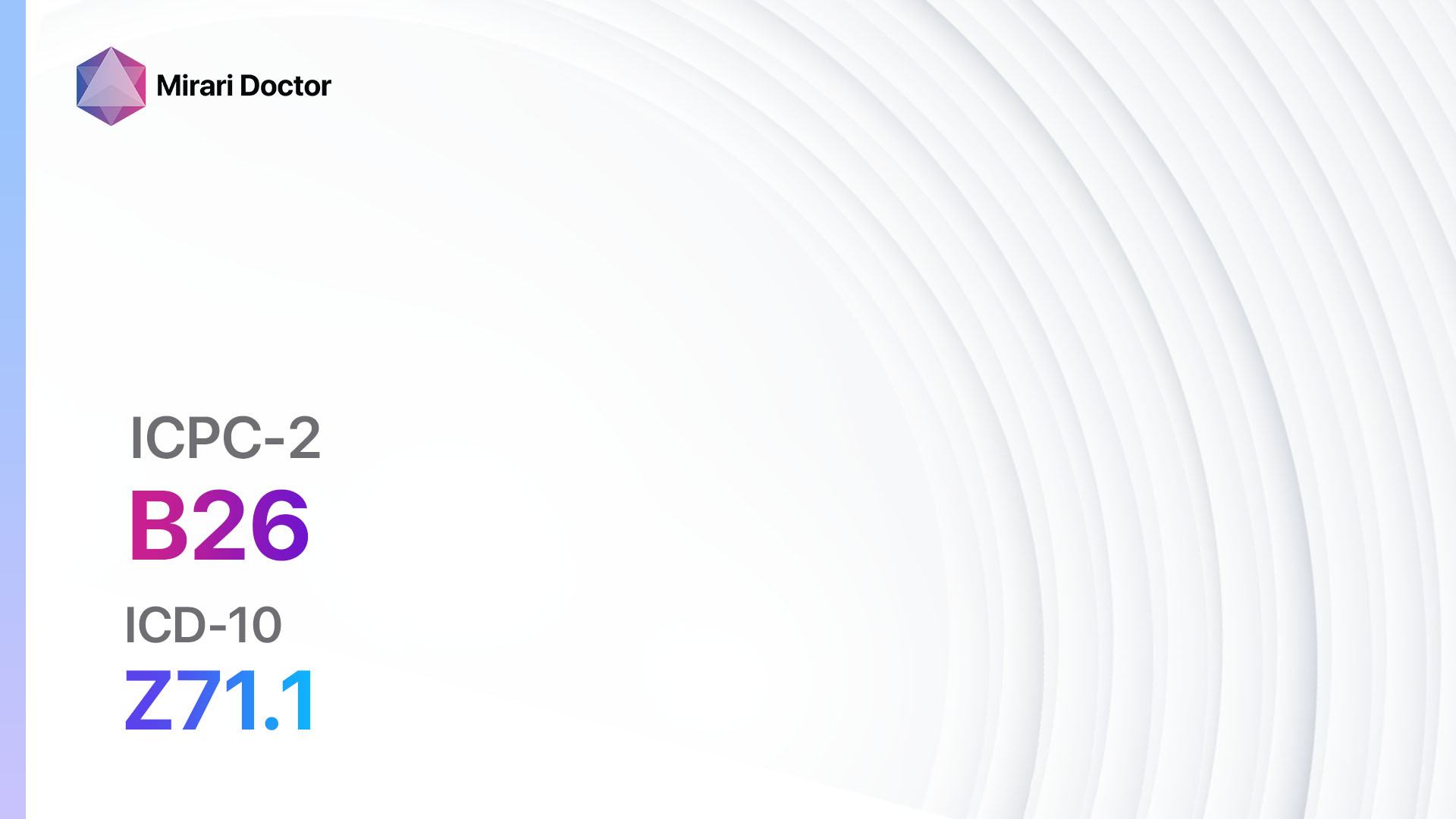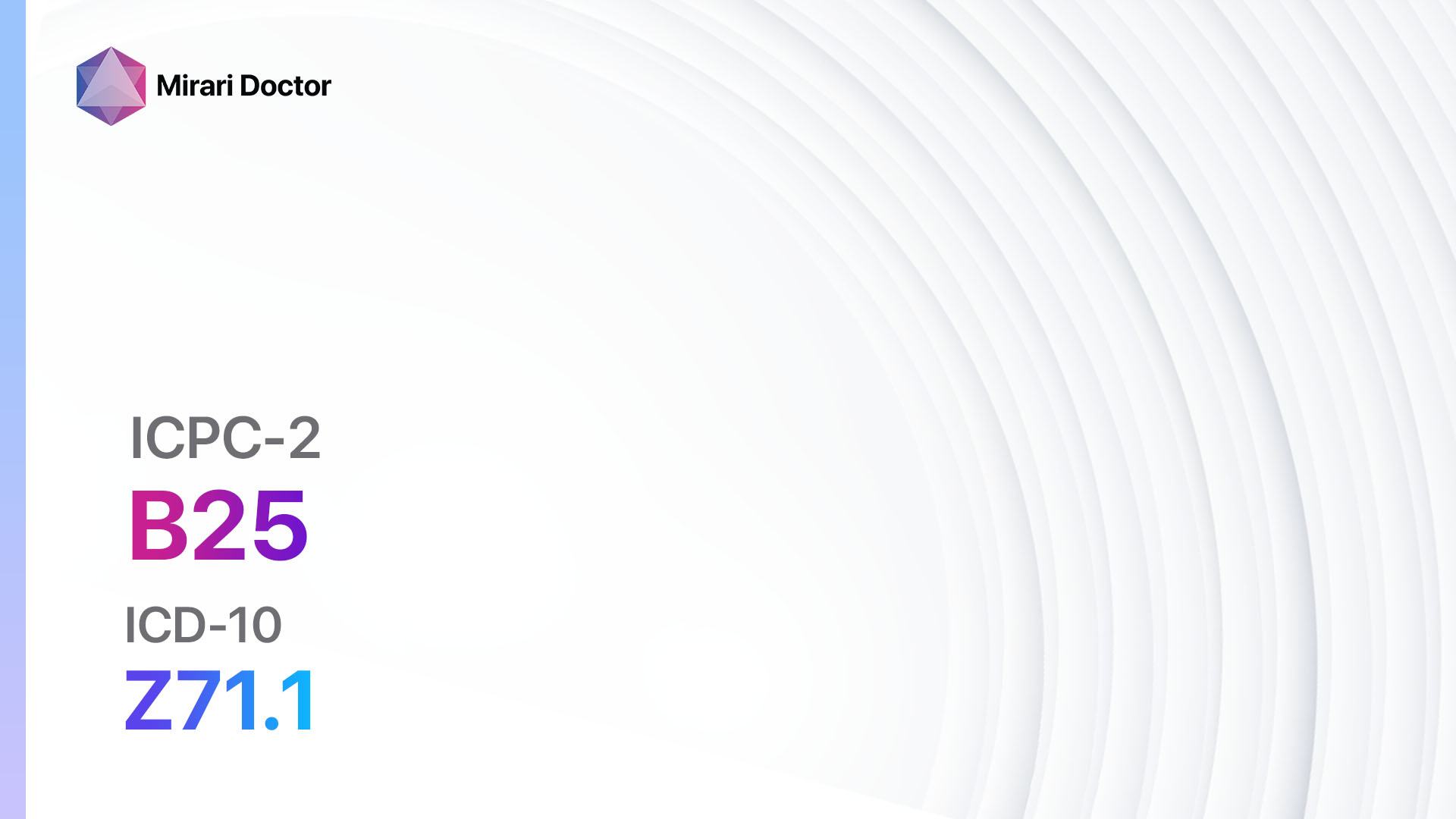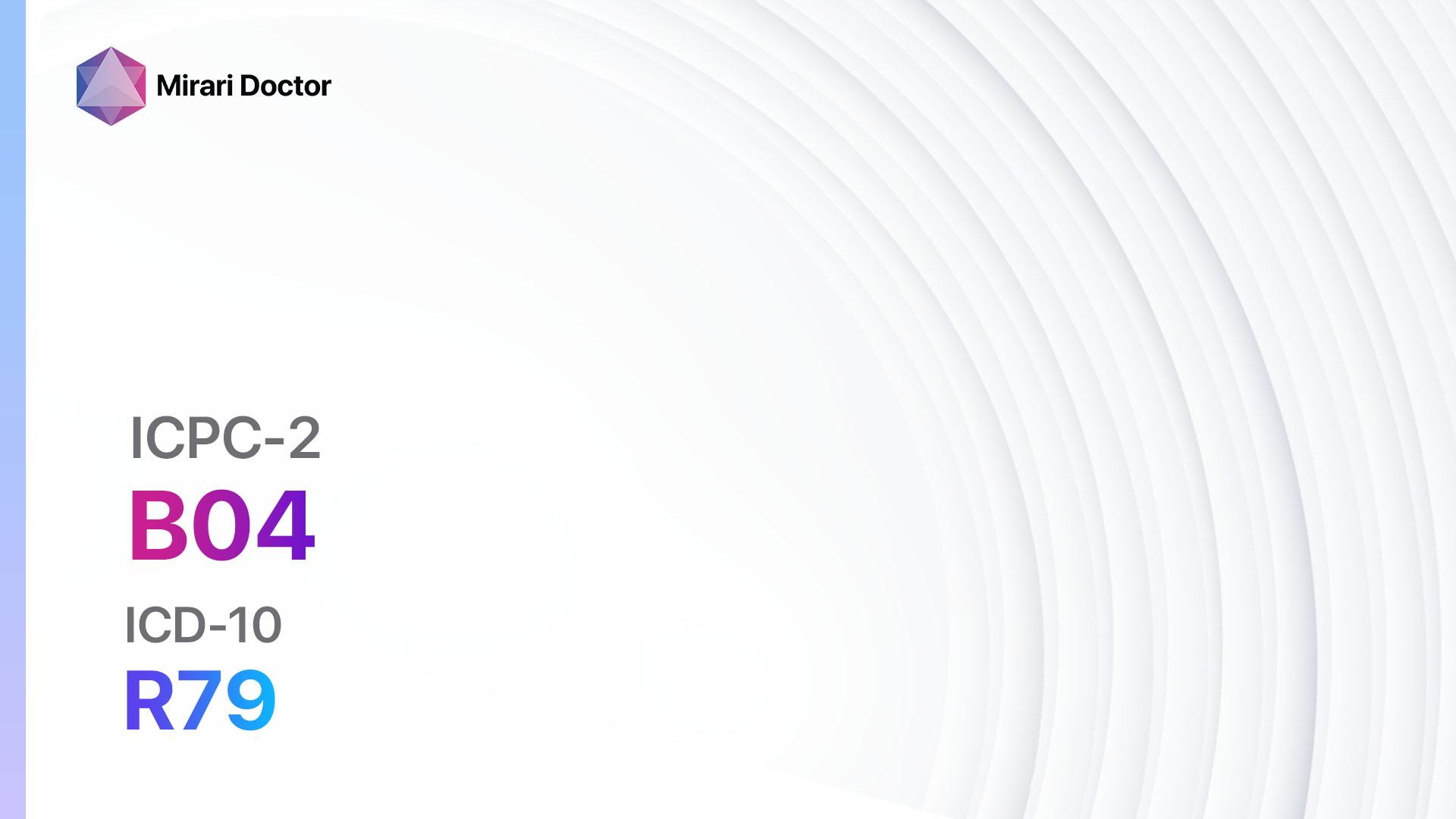
Introduction
Blood symptoms or complaints can be indicative of various underlying conditions or diseases. It is important to properly diagnose and treat these symptoms to prevent any potential complications. This guide aims to provide a comprehensive overview of the diagnostic steps, possible interventions, and lifestyle modifications that can be considered for individuals presenting with blood symptoms or complaints.
Codes
- ICPC-2 Code: B04 Blood symptom/complaint
- ICD-10 Code: R79 Other abnormal findings of blood chemistry
Symptoms
- Fatigue: Feeling excessively tired or lacking energy.[1]
- Pallor: Paleness of the skin or mucous membranes.[2]
- Easy bruising: Unexplained bruises or bleeding under the skin.[3]
- Shortness of breath: Difficulty breathing or feeling breathless.[1]
- Rapid heart rate: Increased heart rate or palpitations.[1]
- Dizziness or lightheadedness: Feeling faint or unsteady.[1]
- Chest pain: Discomfort or pain in the chest area.[1]
- Bleeding: Unexplained or excessive bleeding from any part of the body.[3]
- Swollen lymph nodes: Enlarged lymph nodes in the neck, armpits, or groin.[4]
These symptoms may vary depending on the underlying cause or disease.
Causes
- Anemia: A condition characterized by a decrease in the number of red blood cells or a decrease in the amount of hemoglobin in the blood.[1]
- Bleeding disorders: Conditions that affect the body’s ability to form blood clots or control bleeding.[3]
- Infections: Certain infections can affect the blood cells or cause inflammation.[4]
- Blood cancers: Leukemia, lymphoma, and myeloma are examples of blood cancers that can cause blood symptoms or complaints.[4]
- Autoimmune disorders: Conditions where the immune system mistakenly attacks healthy cells and tissues, including blood cells.[5]
- Medications: Certain medications can affect blood cell production or function.[5]
- Nutritional deficiencies: Lack of essential nutrients, such as iron, vitamin B12, or folate, can lead to blood-related symptoms.[1]
- Chronic diseases: Conditions like kidney disease or liver disease can affect blood cell production or function.[5]
Diagnostic Steps
Medical History
- Gather information about the patient’s symptoms, including their duration, severity, and any associated factors.[6]
- Ask about any previous medical conditions, surgeries, or treatments that may be relevant.[6]
- Inquire about family history of blood disorders or diseases.[6]
- Assess the patient’s lifestyle factors, such as diet, exercise, and exposure to toxins or chemicals.[6]
- Determine if the patient is taking any medications or supplements that may affect blood cell production or function.[6]
Physical Examination
- Perform a thorough physical examination, including vital signs, general appearance, and specific examination of the cardiovascular and lymphatic systems.[6]
- Look for signs of pallor, jaundice, or other skin abnormalities.[2]
- Check for enlarged lymph nodes or spleen.[4]
- Listen to the heart and lungs for any abnormal sounds or murmurs.[6]
- Palpate the abdomen to assess for organ enlargement or tenderness.[6]
Laboratory Tests
- Complete Blood Count (CBC): Measures the number and types of blood cells, including red blood cells, white blood cells, and platelets.[7]
- Blood Smear: A microscopic examination of a blood sample to evaluate the size, shape, and appearance of blood cells.[7]
- Coagulation Studies: Assess the blood’s ability to clot properly.[7]
- Iron Studies: Measure the levels of iron, ferritin, and transferrin in the blood to evaluate for iron deficiency or overload.[7]
- Vitamin B12 and Folate Levels: Determine if deficiencies in these vitamins are contributing to the blood symptoms.[7]
- Liver Function Tests: Assess the liver’s ability to produce clotting factors and metabolize medications.[7]
- Kidney Function Tests: Evaluate the kidneys’ role in blood cell production and elimination of waste products.[7]
Diagnostic Imaging
- Ultrasound: Used to visualize the organs and blood vessels in the abdomen or other areas of concern.[8]
- X-rays: Can help identify abnormalities in the bones or lungs that may be contributing to the blood symptoms.[8]
- CT Scan or MRI: Provide detailed images of the organs, blood vessels, or lymph nodes to aid in diagnosis.[8]
- Bone Marrow Aspiration and Biopsy: Involves taking a sample of bone marrow to evaluate for abnormalities in blood cell production.[8]
Other Tests
- Genetic Testing: May be necessary to identify inherited blood disorders or diseases.[9]
- Flow Cytometry: A laboratory technique used to analyze the characteristics of individual cells, including blood cells.[9]
- Immunohistochemistry: Used to identify specific proteins or markers on cells, which can help diagnose certain blood disorders or diseases.[9]
- Specialized Coagulation Tests: If a bleeding disorder is suspected, additional tests may be required to assess the blood’s clotting ability.[9]
Follow-up and Patient Education
- Schedule follow-up appointments to monitor the patient’s progress and response to treatment.[10]
- Provide education on the underlying condition or disease and its management.[10]
- Discuss lifestyle modifications, such as dietary changes or exercise recommendations, to support overall health and blood cell production.[10]
- Address any concerns or questions the patient may have regarding their condition or treatment plan.[10]
Possible Interventions
Traditional Interventions
Medications:
Top 5 drugs for blood symptoms/complaints:
- Iron Supplements (e.g., Ferrous sulfate, Ferrous gluconate):
- Cost: Generic versions can be $3-$10/month.
- Contraindications: Hemochromatosis, iron overload.
- Side effects: Upset stomach, constipation.
- Severe side effects: Allergic reactions, iron toxicity.
- Drug interactions: Antacids, tetracycline antibiotics.
- Warning: Take on an empty stomach for better absorption.
- Vitamin B12 Supplements (e.g., Cyanocobalamin, Methylcobalamin):
- Cost: Generic versions can be $5-$20/month.
- Contraindications: Leber’s disease, cobalt allergy.
- Side effects: Upset stomach, diarrhea.
- Severe side effects: Allergic reactions, hypokalemia.
- Drug interactions: Metformin, proton pump inhibitors.
- Warning: Regular monitoring of vitamin B12 levels may be necessary.
- Folic Acid Supplements:
- Cost: Generic versions can be $3-$10/month.
- Contraindications: Vitamin B12 deficiency.
- Side effects: Upset stomach, diarrhea.
- Severe side effects: Allergic reactions, seizures.
- Drug interactions: Methotrexate, sulfasalazine.
- Warning: Regular monitoring of folic acid levels may be necessary.
- Anticoagulants (e.g., Warfarin, Apixaban):
- Cost: Generic versions can be $10-$50/month.
- Contraindications: Active bleeding, history of heparin-induced thrombocytopenia.
- Side effects: Increased risk of bleeding.
- Severe side effects: Severe bleeding, allergic reactions.
- Drug interactions: NSAIDs, other blood thinners.
- Warning: Regular monitoring of INR (International Normalized Ratio) may be necessary.
- Immunosuppressants (e.g., Prednisone, Azathioprine):
- Cost: Generic versions can be $10-$50/month.
- Contraindications: Active infections, systemic fungal infections.
- Side effects: Increased risk of infections, weight gain.
- Severe side effects: Adrenal insufficiency, osteoporosis.
- Drug interactions: NSAIDs, live vaccines.
- Warning: Taper off gradually to avoid adrenal crisis.
Alternative Drugs :
- Erythropoiesis-Stimulating Agents (e.g., Epoetin alfa): Stimulate the production of red blood cells in certain conditions.
- Corticosteroids (e.g., Prednisone): Used to suppress the immune system in autoimmune disorders.
- Immunoglobulin Therapy: Provides antibodies to help fight infections in certain conditions.
- Chemotherapy: Used in the treatment of blood cancers.
- Antibiotics: Prescribed for infections that may be causing blood symptoms.
Surgical Procedures:
- Blood Transfusion: In severe cases of anemia or blood loss, a blood transfusion may be necessary to restore blood cell levels.
- Bone Marrow Transplant: Used in certain blood cancers or severe bone marrow disorders to replace diseased or damaged bone marrow with healthy cells.
Alternative Interventions
- Acupuncture: May help improve blood flow and reduce pain. Cost: $60-$120 per session.
- Chelation therapy: Controversial treatment involving the administration of chelating agents to remove heavy metals from the body. Cost: $75-$150 per session.
- Hyperbaric oxygen therapy: Involves breathing pure oxygen in a pressurized chamber to increase oxygen delivery to tissues. Cost: $200-$300 per session.
- Herbal supplements: Some herbs, such as garlic and ginkgo biloba, may have potential benefits for improving circulation. Cost: Varies depending on the specific supplement.
- Meditation and relaxation techniques: Can help reduce stress and promote overall well-being. Cost: Varies depending on the specific practice.
Lifestyle Interventions
- Dietary modifications: Include foods rich in iron, vitamin B12, and folate to support blood cell production. Cost: Varies depending on individual dietary choices.
- Regular exercise: Promotes cardiovascular health and improves blood circulation. Cost: Varies depending on individual preferences (e.g., gym membership, equipment).
- Stress management techniques: Reduce stress levels, which can positively impact blood cell production and overall health. Cost: Varies depending on the specific practice (e.g., yoga classes, therapy sessions).
- Smoking cessation: Quitting smoking improves overall cardiovascular health and blood circulation. Cost: Varies depending on individual smoking cessation methods.
- Adequate sleep: Getting enough sleep supports immune function and overall health. Cost: Varies depending on individual sleep habits and preferences.
It is important to note that the cost ranges provided are approximate and may vary depending on the location and availability of the interventions. It is recommended to consult with healthcare professionals for personalized advice and treatment options based on individual circumstances.
Mirari Cold Plasma Alternative Intervention
Understanding Mirari Cold Plasma
- Safe and Non-Invasive Treatment: Mirari Cold Plasma is a safe and non-invasive treatment option for various skin conditions. It does not require incisions, minimizing the risk of scarring, bleeding, or tissue damage.
- Efficient Extraction of Foreign Bodies: Mirari Cold Plasma facilitates the removal of foreign bodies from the skin by degrading and dissociating organic matter, allowing easier access and extraction.
- Pain Reduction and Comfort: Mirari Cold Plasma has a local analgesic effect, providing pain relief during the treatment, making it more comfortable for the patient.
- Reduced Risk of Infection: Mirari Cold Plasma has antimicrobial properties, effectively killing bacteria and reducing the risk of infection.
- Accelerated Healing and Minimal Scarring: Mirari Cold Plasma stimulates wound healing and tissue regeneration, reducing healing time and minimizing the formation of scars.
Mirari Cold Plasma Prescription
Video instructions for using Mirari Cold Plasma Device – B04 Blood symptom/complaint (ICD-10:R79)
| Mild | Moderate | Severe |
| Mode setting: 7 (Immunotherapy) Location: 1 (Sacrum) Morning: 15 minutes, Evening: 15 minutes |
Mode setting: 7 (Immunotherapy) Location: 1 (Sacrum) Morning: 30 minutes, Lunch: 30 minutes, Evening: 30 minutes |
Mode setting: 7 (Immunotherapy) Location: 1 (Sacrum) Morning: 30 minutes, Lunch: 30 minutes, Evening: 30 minutes |
| Mode setting: 7 (Immunotherapy) Location: 4 (Heart, Bile & Pancreas) Morning: 15 minutes, Evening: 15 minutes |
Mode setting: 7 (Immunotherapy) Location: 4 (Heart, Bile & Pancreas) Morning: 30 minutes, Lunch: 30 minutes, Evening: 30 minutes |
Mode setting: 7 (Immunotherapy) Location: 4 (Heart, Bile & Pancreas) Morning: 30 minutes, Lunch: 30 minutes, Evening: 30 minutes |
| Mode setting: 7 (Immunotherapy) Location: 1 (Sacrum) Morning: 15 minutes, Evening: 15 minutes |
Mode setting: 7 (Immunotherapy) Location: 1 (Sacrum) Morning: 30 minutes, Lunch: 30 minutes, Evening: 30 minutes |
Mode setting: 7 (Immunotherapy) Location: 1 (Sacrum) Morning: 30 minutes, Lunch: 30 minutes, Evening: 30 minutes |
| Total Morning: 45 minutes approx. $7.50 USD, Evening: 45 minutes approx. $7.50 USD |
Total Morning: 90 minutes approx. $15 USD, Lunch: 90 minutes approx. $15 USD, Evening: 90 minutes approx. $15 USD |
Total Morning: 90 minutes approx. $15 USD, Lunch: 90 minutes approx. $15 USD, Evening: 90 minutes approx. $15 USD |
| Usual treatment for 7-60 days approx. $105 USD – $900 USD | Usual treatment for 6-8 weeks approx. $1,890 USD – $2,520 USD |
Usual treatment for 3-6 months approx. $4,050 USD – $8,100 USD
|
 |
|
Use the Mirari Cold Plasma device to treat Blood symptom/complaint effectively.
WARNING: MIRARI COLD PLASMA IS DESIGNED FOR THE HUMAN BODY WITHOUT ANY ARTIFICIAL OR THIRD PARTY PRODUCTS. USE OF OTHER PRODUCTS IN COMBINATION WITH MIRARI COLD PLASMA MAY CAUSE UNPREDICTABLE EFFECTS, HARM OR INJURY. PLEASE CONSULT A MEDICAL PROFESSIONAL BEFORE COMBINING ANY OTHER PRODUCTS WITH USE OF MIRARI.
Step 1: Cleanse the Skin
- Start by cleaning the affected area of the skin with a gentle cleanser or mild soap and water. Gently pat the area dry with a clean towel.
Step 2: Prepare the Mirari Cold Plasma device
- Ensure that the Mirari Cold Plasma device is fully charged or has fresh batteries as per the manufacturer’s instructions. Make sure the device is clean and in good working condition.
- Switch on the Mirari device using the power button or by following the specific instructions provided with the device.
- Some Mirari devices may have adjustable settings for intensity or treatment duration. Follow the manufacturer’s instructions to select the appropriate settings based on your needs and the recommended guidelines.
Step 3: Apply the Device
- Place the Mirari device in direct contact with the affected area of the skin. Gently glide or hold the device over the skin surface, ensuring even coverage of the area experiencing.
- Slowly move the Mirari device in a circular motion or follow a specific pattern as indicated in the user manual. This helps ensure thorough treatment coverage.
Step 4: Monitor and Assess:
- Keep track of your progress and evaluate the effectiveness of the Mirari device in managing your Blood symptom/complaint. If you have any concerns or notice any adverse reactions, consult with your health care professional.
Note
This guide is for informational purposes only and should not replace the advice of a medical professional. Always consult with your healthcare provider or a qualified medical professional for personal advice, diagnosis, or treatment. Do not solely rely on the information presented here for decisions about your health. Use of this information is at your own risk. The authors of this guide, nor any associated entities or platforms, are not responsible for any potential adverse effects or outcomes based on the content.
Mirari Cold Plasma System Disclaimer
- Purpose: The Mirari Cold Plasma System is a Class 2 medical device designed for use by trained healthcare professionals. It is registered for use in Thailand and Vietnam. It is not intended for use outside of these locations.
- Informational Use: The content and information provided with the device are for educational and informational purposes only. They are not a substitute for professional medical advice or care.
- Variable Outcomes: While the device is approved for specific uses, individual outcomes can differ. We do not assert or guarantee specific medical outcomes.
- Consultation: Prior to utilizing the device or making decisions based on its content, it is essential to consult with a Certified Mirari Tele-Therapist and your medical healthcare provider regarding specific protocols.
- Liability: By using this device, users are acknowledging and accepting all potential risks. Neither the manufacturer nor the distributor will be held accountable for any adverse reactions, injuries, or damages stemming from its use.
- Geographical Availability: This device has received approval for designated purposes by the Thai and Vietnam FDA. As of now, outside of Thailand and Vietnam, the Mirari Cold Plasma System is not available for purchase or use.
References
- Anemia – Symptoms and causes. Mayo Clinic. https://www.mayoclinic.org/diseases-conditions/anemia/symptoms-causes/syc-20351360. Accessed June 4, 2024.
- Anemia: Symptoms, types, treatment, causes, diet, and more. Medical News Today. https://www.medicalnewstoday.com/articles/158800. Accessed June 4, 2024.
- Bleeding Disorders – Treatment. National Heart, Lung, and Blood Institute. https://www.nhlbi.nih.gov/health/bleeding-disorders/treatment. Accessed June 4, 2024.
- Blood disorders: Types, symptoms, and causes. Medical News Today. https://www.medicalnewstoday.com/articles/322260. Accessed June 4, 2024.
- Aplastic anemia – Symptoms & causes. Mayo Clinic. https://www.mayoclinic.org/diseases-conditions/aplastic-anemia/symptoms-causes/syc-20355015. Accessed June 4, 2024.
- Diagnosing Blood Disorders in Your Child: Common Tests. Saint Luke’s Health System. https://www.saintlukeskc.org/health-library/diagnosing-blood-disorders-your-child-common-tests. Accessed June 4, 2024.
- Laboratory Tests for Blood Disorders. Merck Manual Consumer Version. https://www.msdmanuals.com/home/blood-disorders/symptoms-and-diagnosis-of-blood-disorders/laboratory-tests-for-blood-disorders. Accessed June 4, 2024.
- Aplastic anemia – Diagnosis & treatment. Mayo Clinic. https://www.mayoclinic.org/diseases-conditions/aplastic-anemia/diagnosis-treatment/drc-20355020. Accessed June 4, 2024.
- Hematology Tests: Diagnostic procedures for blood diseases. Sri Ramakrishna Hospital. https://www.sriramakrishnahospital.com/blog/haematology/hematology-tests-diagnostic-procedures-for-blood-diseases/. Accessed June 4, 2024.
- Vitamin deficiency anemia – Diagnosis & treatment. Mayo Clinic. https://www.mayoclinic.org/diseases-conditions/vitamin-deficiency-anemia/diagnosis-treatment/drc-20355031. Accessed June 4, 2024.
Related articles
Made in USA


